When I started Triathlon, Transition was a mystery to me.
Everyone was talking about “T1” and “T2” and I had no earthly idea what that meant.
Was it something to do with a potty? I need to transition? Sometimes.
But really, transition means two things.
First, transition as a noun:
The place where you store your bike (and other stuff) during a race. This location is usually a large, open area. Within the big area, you will likely have an assigned space to place your things: bike, shoes, etc.
Second, transition as a verb:
The action of moving between the sports. You transition from the swim to the bike, from the bike to the run.
Note: this post applies to shorter distance triathlons, and is written with the newbie triathlete in mind. Ironman is another beast entirely with all the bags and special needs and such. Go here to read about Things Learned from Ironman.
TRANSITION TIP:
Ask yourself: Am I wearing what I should be wearing for the sport I am about to do?
Goggles go with swim. Helmet goes with bike. Really, transition is like a preschool game of Memory. But the problem in the middle of a race is, you are actually thinking like a cranky preschooler—so remembering to wear the proper gear is more challenging than you might initially imagine.
The best advice I have about transition in your first few races is: take your time. I know it is counter-intuitive to “take your time” in a race. But making a strong exit from transition is more beneficial than making a fast (and potentially clumsy) exit.
In my book, I have a big ole section covering race day, where I go into detail about the things you need for your race and how to set up your transition area—but for now, here’s a quick overview of transition—the noun and the verb. I’ll cover Part II—what you need in transition at a future date.
T1
T1 is the transition from the end of the swim to the bike.
As you are finishing up your swim, you begin to think of your transition to the bike: Where is my bike? Repeat the order of your transition in your head: helmet, glasses, shoes, race number belt with number turned to the back (or whatever order you choose). This will make a smooth transition onto the bike.
Again, as a beginner, you will want to take your time in both transitions, especially in your first race. Yes, this whole thing is about racing. But you don’t want to come barreling out of transition without your helmet and get disqualified. Take a moment to gather your composure, and ensure that you have all your gear (and wits) about you.
As I am coming out of the water, I usually take off my goggles and swim cap. If you are wearing a wetsuit, you can pull the wetsuit down to your waist as you are coming out of the water. Races will often have “strippers” (woo-hoo! Triathlon is awesome! Okay, not those kind of strippers…)—volunteers who help strip off your wetsuit near the swim exit. You sit on your bum, lean back and they riiiiiip your wetsuit from your body. Fun times! Let them help you, it’s much easier that way!
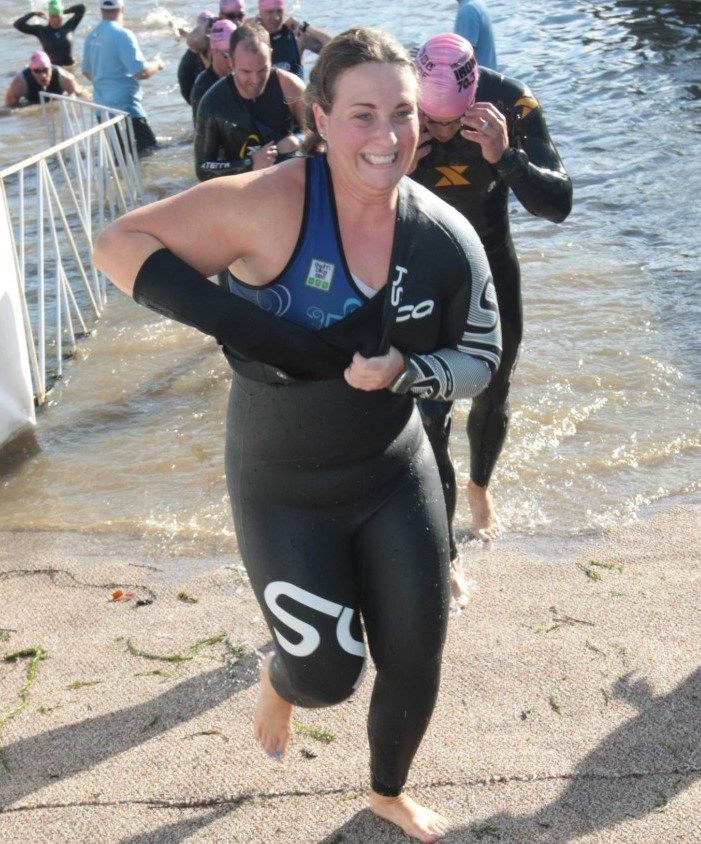

Once you are in your transition area, having an extra bottle of water to spray off your feet and eyes (especially after a saltwater swim) is a nice addition. Usually you will have mud, sand or grass on your feet from the run into T1 after the swim. Sometimes the race director will have a baby pool to step into to clean your feet, but sometimes you may overlook the pool or it may be crowded (or dirtier than your feet!). I have found this water bottle tip to be great advice! I love to rinse and quickly wipe my feet before putting on my bike shoes.
I normally do not wear socks on the bike because my feet are wet and wet socks are frustrating. By the time I run, I am usually dry enough to put on socks. Or, I will wear socks on the bike and then, put on fresh socks before the run. However, this is a matter of personal preference—do what works for you! Once you are helmeted, race number clipped on (use a race number belt, described later) and ready, you can head out to bike. (And no, you do not use a towel to dry off your body before getting on the bike. Crazy, I know. Get on that bike sopping wet—you’ll survive, I promise!)
You must roll (not ride) your bike out of the transition area. There will usually be a banner or a sign: Bike Exit. Head that way, walking alongside your bike, but do not get on your bike until after the mount line.
Mount line? What?
Before the race, make note of where the “Bike Mount” line is. Most races have an actual line of tape or paint placed on the ground right outside of the transition bike exit. Sometimes they designate it with construction cones or a sign: “Mount Here.” Regardless of what the line is—it is only after this line or designated area that you are allowed to get on your bike and ride. Do not mount your bike before this line or you can get disqualified. Usually the volunteers are very good about letting you know (screaming, if necessary) where to be and when to get on your bike.
The best practice is to roll your bike past this line and over to the right side (to make room for those who are flying out of transition). Clip safely into your pedals if you have clipless ones and pedal off for the bike leg. As a beginner, the race will be confusing enough. If you get nervous or confused, just move to the right side of the course and gain your composure before moving again. But always get yourself to the right—don’t just stop in the middle of anywhere in a race.
T2
T2 is the second transition when you finish the bike, and begin your run.
Much like the way out of transition—you do not ride into transition either. You must walk and roll your bike back to your spot. As you are riding your bike towards T2, you will see a “Bike Dismount” or “Dismount Here” line. You must dismount your bike before this line. Sometimes the dismount line is the same as the mount line; sometimes they are in two different places—just check before you begin the race.
If you are shaky on the dismount, slow down well in advance of transition and pull to the right and take your time dismounting. Once you are off your bike, roll your bike to your transition spot and rack your bike.
At this point, you are ready to take off your helmet and bike shoes and get ready to run.
Turn your race number to the front, find your hat or visor, slip on those running shoes (and socks if you are like me and bike without) and get moving!
As the Expert says when he is spectating my races: “Run and done!” That is my favorite mantra after the bike. I repeat it often: run and done and run and done and run and done and run…
T3
Fooled you. No such thing as T3. Well, actually there is. T3 is the time after the race where you wander around aimlessly looking for snacks and beer. Beer! Beer! (I’m sorry, isn’t that the reason we race?)
Oh, and to hug the cute kidlets and family afterwards.


Practice your transitions before race day. You will look funny in your driveway, but who cares? Better for your neighbors to think you are nuts than your fellow triathletes.

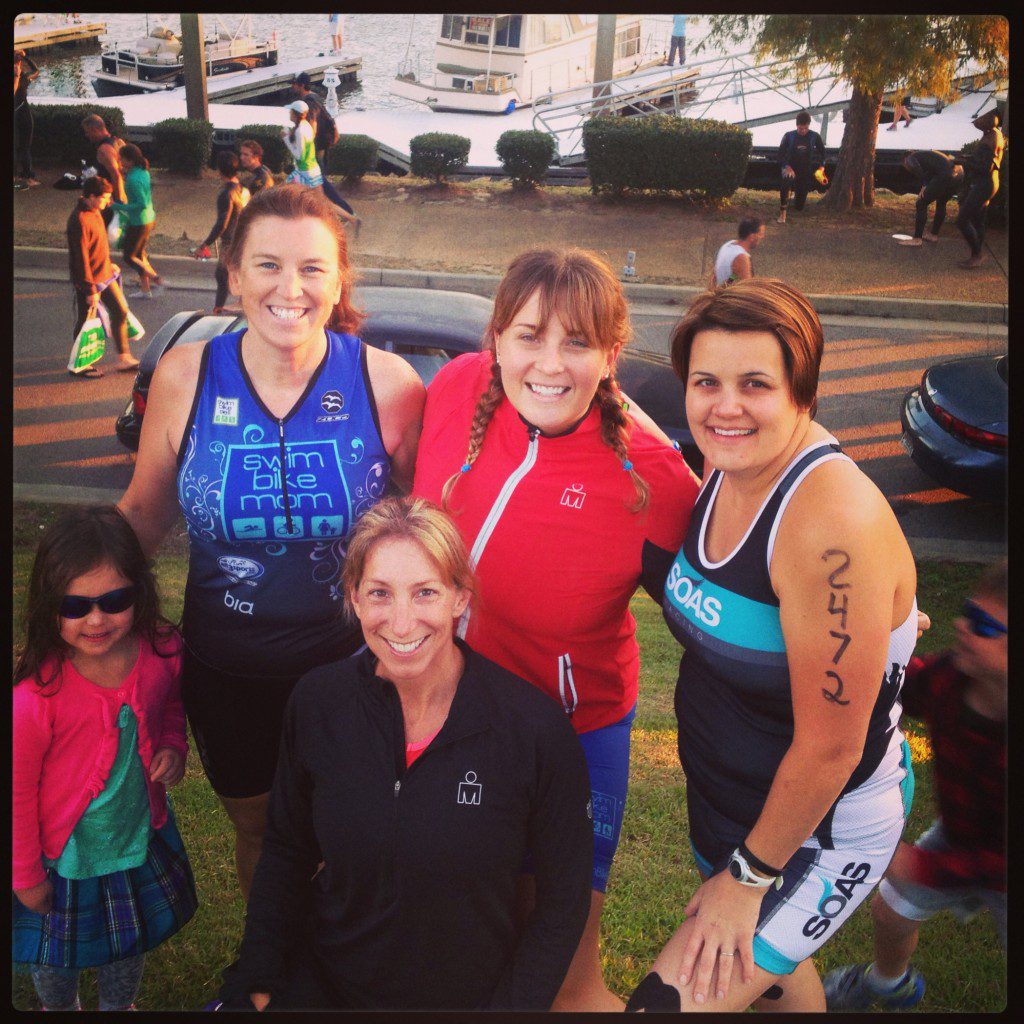
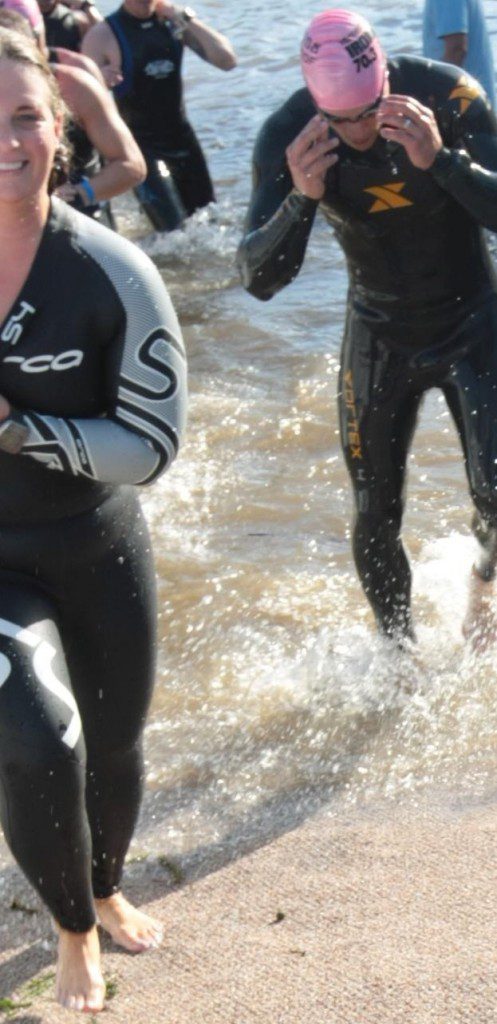
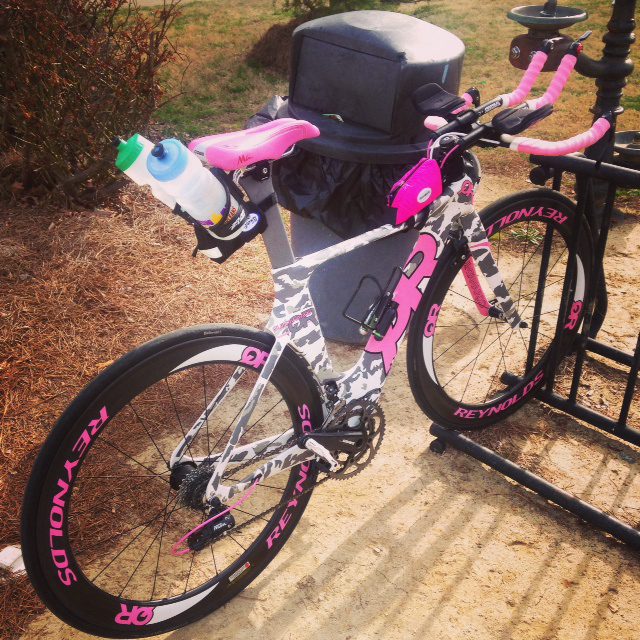
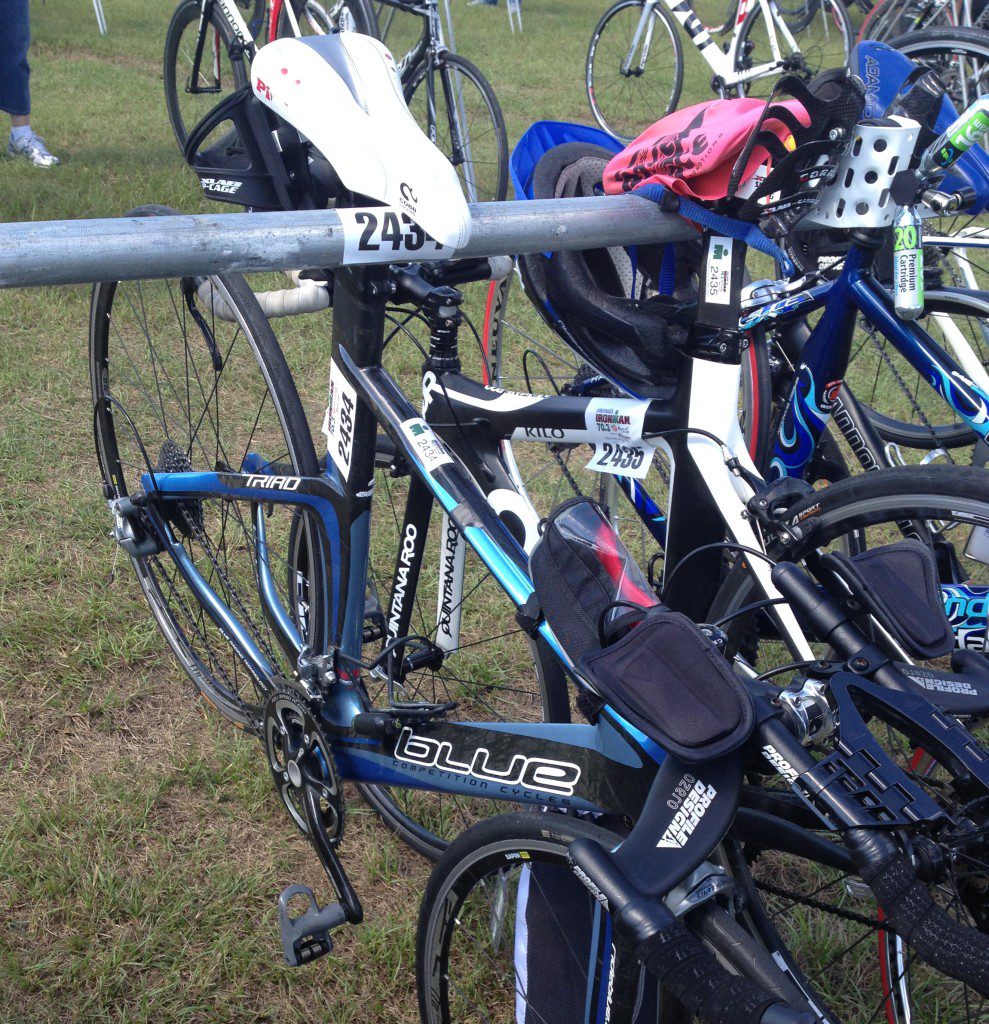
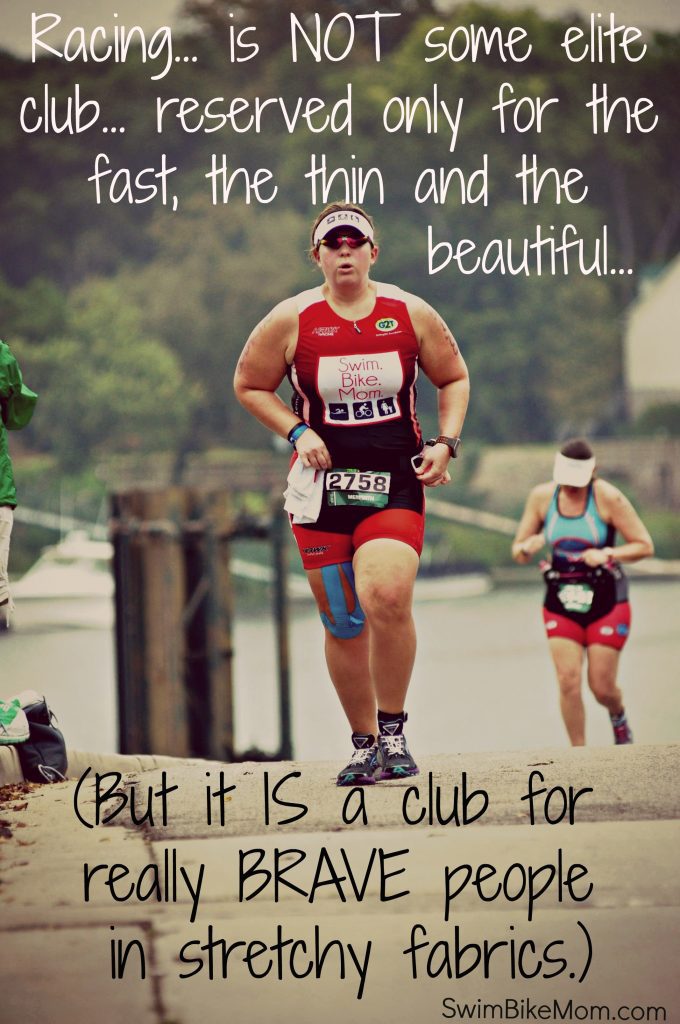
I am going to be doing a Sprint Tri and I am still confused as to what I use for a mat at T1 and T2. Is it a bath mat or a towel? And what do I do with it? Do you leave it until you are completely done or do you pack it up at some point and put everything in a bag and if so where do you put the bag, do you put it on your bike when your ready to run?
I have been re-reading sections of the book as I approach my first event (a duathlon, but still transitions) and this post is a great summary! I’m thinking of practicig transitioning from run to bike then back to run the next few weekends. Thanks!!
You can use a small hand towel OR a transition mat (they sell them here: http://www.triathletesports.com/triathlon/triathlon-gear/race-day-gear/transition-mats.html?gclid=CMfVhcLnsL0CFRQS7AodhwcAEA). You put your stuff on it (shoes, helmet, gear)…just lets you mark your space, keep it out of the grass, if necessary)… everything stays in transition (except what you are wearing for the run), and you pick it up after the race.
Tri newbies; when you are ready to dismount that bike after your ride, be prepared for jelly legs. At least, that is what I called my legs after my first Tri bike ride. I dismointed my bike and thought I was going to fall down because my legs were like jello, all wobbly! I did my first Tri at the ripe young age of 53 and I had a blast!
Okay AWESOME post thank you!!!! Makes me feel **slightly** more confident for my first tri. 😉 Question for you: this might be dumb but do the race people give you a number belt or do I need to purchase one myself ahead of time? Thanks for all your help!!! More than you can ever know! 🙂
You need your own race belt. They have them often at expos – or you can find them on Amazon. Do search for “race number belt.” 🙂
Great tips. I think what scares me the most about doing a triathlon is the transitions, just because I have no idea what to do, how to do it, what I need there… at least running/swimming/biking I know how to do.
I’m doing my first Mini-Tri in June – scared to death! But paid the nearly $100 so this 51 year old Babcia is doing this!! Thanks for the newbie tips & I can’t wait to meet you in Michigan@the TriGoddess:)
Finished my first sprint tri, already signed up for second one in two weeks. I finished, not last nor last in my age group, and did not drown! I call that a win!